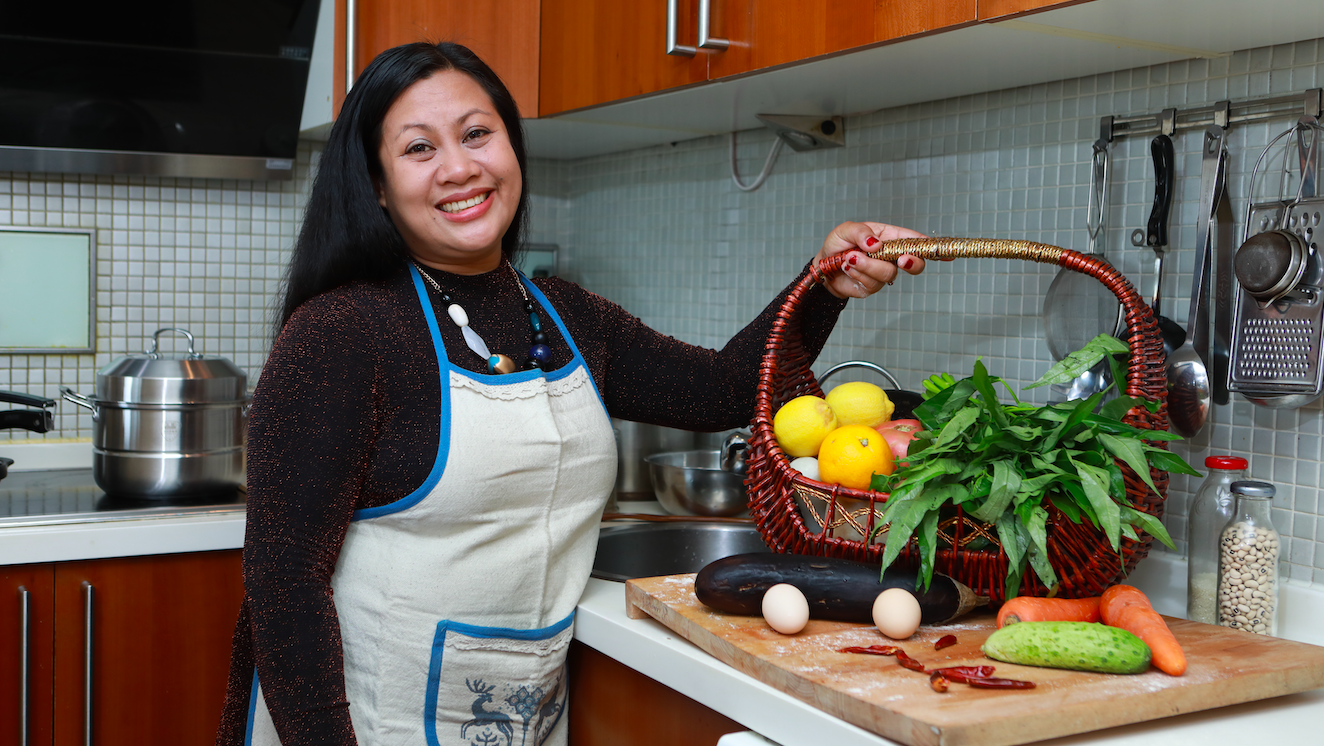“Family is at the heart of the recipes,” says Rona Lumogdang Kulkarni, an Ilonggo (a native of Iloilo City) born to a clan of workers. Her father was a farmer whose specialty was Spanish dishes, while her mom loved creating native pastries. One of her grandfathers was a fisherman who often shared his extra catch for the family dinner. Rona’s seven siblings are also cooks in their own rights, and one of them even owns a small eatery business back in their hometown.
From Iloilo City, Rona found her way to India where she married her husband, Sam. They welcomed their daughter Alicia in Mumbai in 2014. The family relocated to Beijing where Sam works in an automobile company.
In Beijing expat community parlance, Rona is a “trailing spouse” – or a stay-at-home parent whose other half is working. She takes care of their daughter and is in charge of the kitchen.
“I love cooking Filipino food and I mostly cook food with many vegetables because my family loves eating healthy,” Rona shares. When preparing the dishes, she always considers their convenience and healthiness as these reflect her father’s cooking style of creating quick but delicious dishes.
“My father worked as a cook at a restaurant on the famous tourist island of Boracay. He’s also invited to many fiestas to cook for big banquets, and so I learned from observing him how to prepare and cook in bulk without sacrificing quality and taste,” she says, adding that she can cook dishes good for at least 20 people in as little as two hours.
Rona has applied this skill in the many food fairs of Kusina ni Kabayan, where you will see her selling various Filipino dishes paired with rice. One of the events that she truly enjoyed was the Krismas sa Pinas Christmas bazaar in December 2018, which saw over 400 attendees from different countries.
For the Kain na, Kabayan cookbook, Rona picked the Filipino trait marangal (honorable) but she uses its root word dangal (honor) as an inspiration for her recipes. She hopes that her recipes will give readers a glimpse of an Ilonggo household, and how the love for cooking is passed on for generations.
Rona’s Paksiw na Salmon recipe comes from her childhood memory of cooking fish caught by her grandfather, not by frying but by simmering in vinegar. Pork Sisig is her version of the popular spicy savory pork dish served on a sizzling plate. Rona says her father cook spicy sisig for their dining table and for community events, and this particular dish introduced her to the world of spicy food.
Meanwhile, Sweet and Spicy Chicken is Rona’s experimental take on chikin or Korean-style fried chicken. Although she has cooked a similar recipe inspired by her dad’s way of frying chicken back home, her cookbook recipe is a nod to a visiting Korean friend who praised her savory chicken variant.
Rona remembers her mother through four recipes. In the Ginisang Monggo dish, she brings to life her mom’s hearty plate of sautéed mung bean, whose garlicky but savory aroma awakens Rona and her siblings, especially on a cold and rainy day. The three kakanin (native desserts) are the specialties of Rona’s mother: Suman Malagkit, or sticky rice cake wrapped in banana leaves, is a variant of mom’s cassava-based cake; Biko or baked sweet rice cake, is best eaten lukewarm with ripe mango and partnered with kape (coffee); and Ginataang Bilu-bilo or glutinous rice balls is a thick sweet porridge of coconut milk. Ginataang Bilu-bilo is the recipe she inherited from her mother and is the most requested dish at home.
“To me, mom is the queen of Filipino desserts and dad is the best cook. They did not teach me or my siblings how to cook, but I learned their styles though observation. And so I honor my parents through my recipes in this cookbook. And I hope I can also pass this legacy to my daughter,” Rona shares.

This article first appeared in the Kain na, Kabayan: The Kusina ni Kabayan Philippine Cookbook.
Email kusinanikabayan@gmail.com to get your copy.
Co-written by Adam Balilo
Photos: Kusina ni Kabayan
